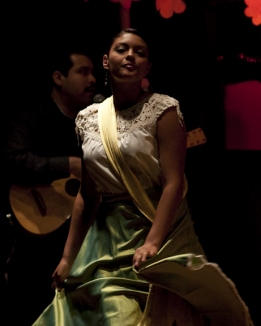LINC has been a valued resource and partner throughout my tenure at the Ford Foundation. Planning for LINC was underway when I arrived here in 2002, and it’s been my great fortune and pleasure to be a part and supporter of LINC’s arc of work—from its early investments in the Creative Communities and health care reform to the Artography and Space for Change programs.
Throughout LINC’s history, it has embodied certain key values. The most important of these has been its commitment to cultural diversity. LINC’s work has contributed in important ways to our understanding of how changing demographics are changing the aesthetic practices of artists and communities. Its partner list is one of the most diverse imaginable—from the International Sonoran Desert Alliance to Elizabeth Streb, from Urban Bush Women to PA’I Foundation in Hawaii to Casita Maria in the Bronx. This is one of the reasons we turned to LINC when we were developing our ideas for a new initiative focused on changing aesthetics in a changing America. LINC was a true thought partner in developing and implementing Artography. And LINC’s early work on space for artists helped inform Ford’s thinking about investing in artist-centered cultural spaces, especially in communities of color, and ultimately the Space for Change initiative. Another important value that LINC has upheld is a commitment to continuous learning. This can be seen in the numerous research reports that LINC commissioned, but also in the dynamic, multi-facted learning community that LINC built and sustained. LINC’s trust in the knowledge and experience of its partners meant that it emphasized cross-community and cross-institution sharing, which speeded both its partners’ learning and the creation of new networks of inter-disciplinary practitioners across the country. I hear all the time from LINC groups about how they are sharing knowledge with each other, and now have networks of colleagues they didn’t know previously.
Another value that distinguishes LINC is flexibility and adaptability. The landscape changed several times during LINC’s relatively short life—the recession, for one thing, and the passage of the Affordable Care Act for another. I was impressed by how nimbly LINC responded to these shifts, adjusting plans and investments quickly and strategically to diminish negative impacts and make the most of the new situation.
LINC wasn’t perfect. I wish we had made more progress on terminology and added more phrases to the lexicon that capture the emerging practices and philosophies of the kind of organizations and artists that LINC supported. But even without more concise messaging, I see that LINC has influenced a broad cross-section of funders, community leaders, and cultural organizations. In all kinds of places—foundations, urban planning offices, neighborhood revitalization projects, local banks and businesses—many more people are now asking, “Where are the artists in this?” That is LINC’s hand, and its legacy.
Roberta Uno

